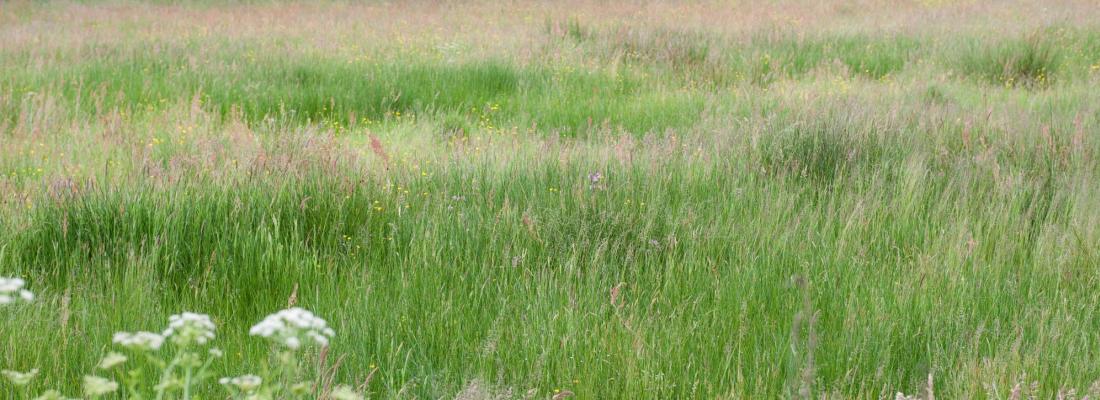Biodiversity Reading time 3 min
Identifying ecological thresholds for optimal ecosystem management
Published on 05 June 2025

Ecosystem responses to global change are often nonlinear. Ecological thresholds are tipping points beyond which small changes in environmental conditions can have disproportionate effects on biodiversity and ecosystem functioning. Such changes in climate—drought, rising temperatures, etc.—are caused by human activities, including land use intensification. Understanding and identifying these ecological thresholds—which require complex data—would enable us to anticipate and take action before ecosystems deteriorate.
Grasslands: One of the most diverse yet threatened ecosystems
Grasslands are rich in biodiversity and provide numerous ecosystem services such as carbon sequestration, water filtering and grazing for livestock. Yet they are one of the most threatened ecosystems as a result of the intensification of land use. Researchers from INRAE and CNRS analysed data from a network of 150 temperate grasslands across Germany, collected between 2008 and 2020. These grasslands, representative of Western Europe, are utilised by farmers at varying levels of land use intensity. To identify the ecological thresholds of these grasslands, researchers analysed a series of functional traits within the ecosystems, i.e. plant characteristics that determine how species respond to, interact with and influence their environment (e.g. leaf size, growth rate, etc.). The research team analysed functional traits to gain deeper insight into how plant species come together and coexist in grasslands. They then compared these findings with the farming practices employed throughout the region.
A key ecological threshold linked to land use intensification
The study detected ecological thresholds linked to nitrogen fertilisation, which abruptly changes the ecological balance of grasslands. The first threshold occurs when farmers begin fertilising the grasslands. Compared to unfertilised natural grasslands (based on 50 sites studied), these fertilised grasslands exhibit reduced biodiversity, yet the ecosystem remains stable and productive. However, beyond a fertilisation level of 80 kg of nitrogen per hectare per year (observed across another 50 sites), researchers detected a critical change: species lost their ability to coexist. Consequently, grasslands became dominated by fewer species with similar functional traits—such as forage grasses like ryegrass and common weeds like dandelion. The study also revealed a threshold beyond which intensifying agricultural practices no longer boosts plant biomass. Instead, it leads to increased nutrient leaching due to enhanced water infiltration and makes crops more vulnerable to climatic stresses, especially drought. Natural grasslands, on the other hand, support a wide variety of plants with varied traits, enhancing their resilience to weather fluctuations. Moreover, these grasslands provide vital ecological services, including carbon sequestration, pollinator support, and soil fertility maintenance.
Measuring functional traits in grasslands enables researchers to assess their capacity to support a high diversity of plant species and take preventive action at the first signs of declining ecosystem services. Additionally, by identifying ecological thresholds in grasslands—where fertilisation exceeds 80 kg of nitrogen per hectare per year—agricultural practices can be adjusted to better balance productivity, biodiversity, and ecological resilience in grasslands. The approach proposed in this study could also be applied to other environmental challenges—such as lake eutrophication, fisheries and forest management, or desertification—to help prevent critical ecosystem shifts and enable timely intervention before they start to deteriorate.
Further research is underway to better understand these ecological thresholds and assess whether the degradation of affected ecosystems can be at least partially reversed.
Reference
Le Bagousse-Pinguet Y.et al. (2025) Thresholds of functional trait diversity driven by land use intensification. Nature Ecology & Evolution DOI : 10.1038/s41559-025-02729-0
